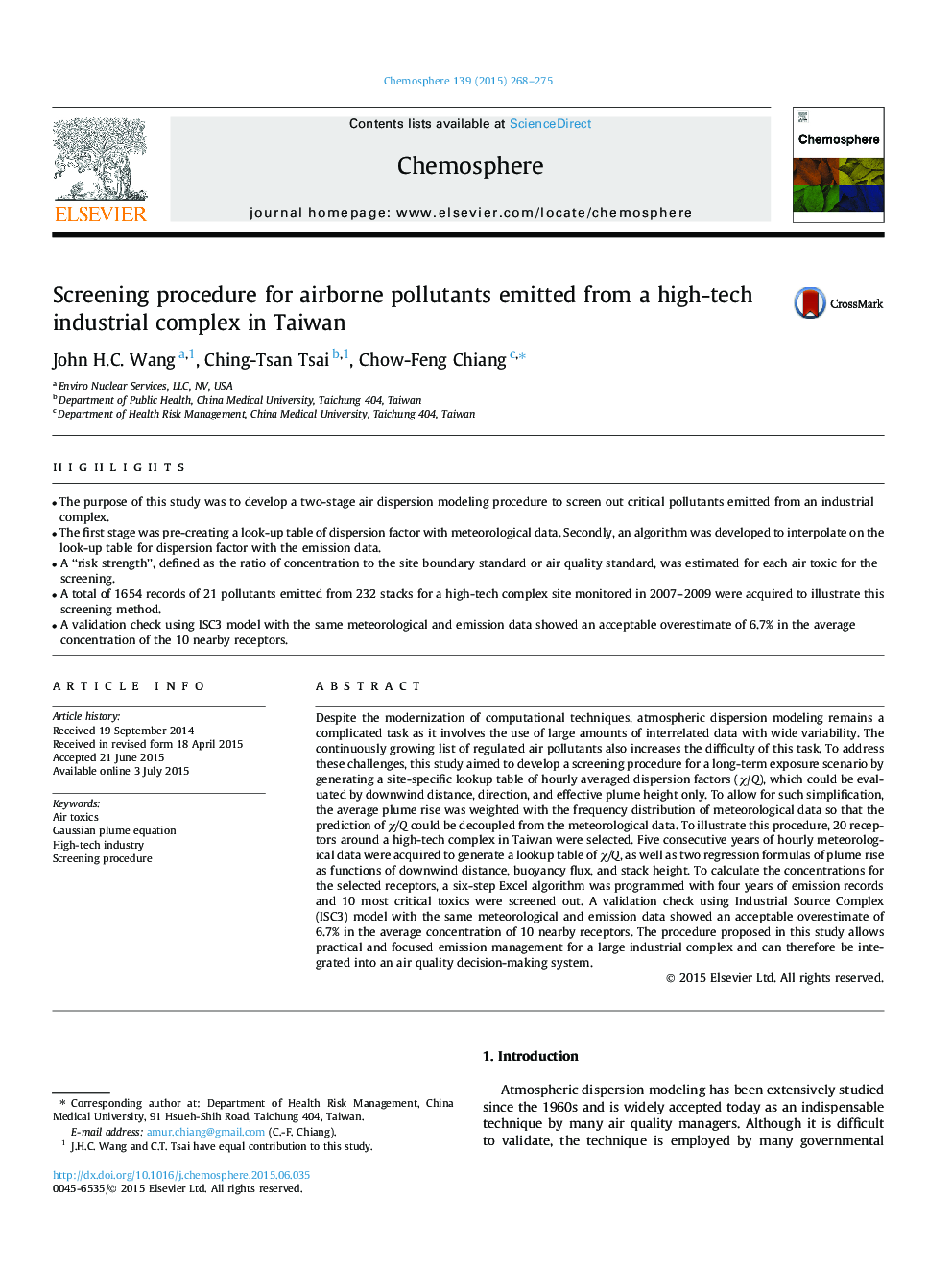| کد مقاله | کد نشریه | سال انتشار | مقاله انگلیسی | نسخه تمام متن |
|---|---|---|---|---|
| 4408156 | 1618832 | 2015 | 8 صفحه PDF | دانلود رایگان |
• The purpose of this study was to develop a two-stage air dispersion modeling procedure to screen out critical pollutants emitted from an industrial complex.
• The first stage was pre-creating a look-up table of dispersion factor with meteorological data. Secondly, an algorithm was developed to interpolate on the look-up table for dispersion factor with the emission data.
• A “risk strength”, defined as the ratio of concentration to the site boundary standard or air quality standard, was estimated for each air toxic for the screening.
• A total of 1654 records of 21 pollutants emitted from 232 stacks for a high-tech complex site monitored in 2007–2009 were acquired to illustrate this screening method.
• A validation check using ISC3 model with the same meteorological and emission data showed an acceptable overestimate of 6.7% in the average concentration of the 10 nearby receptors.
Despite the modernization of computational techniques, atmospheric dispersion modeling remains a complicated task as it involves the use of large amounts of interrelated data with wide variability. The continuously growing list of regulated air pollutants also increases the difficulty of this task. To address these challenges, this study aimed to develop a screening procedure for a long-term exposure scenario by generating a site-specific lookup table of hourly averaged dispersion factors (χ/Q), which could be evaluated by downwind distance, direction, and effective plume height only. To allow for such simplification, the average plume rise was weighted with the frequency distribution of meteorological data so that the prediction of χ/Q could be decoupled from the meteorological data. To illustrate this procedure, 20 receptors around a high-tech complex in Taiwan were selected. Five consecutive years of hourly meteorological data were acquired to generate a lookup table of χ/Q, as well as two regression formulas of plume rise as functions of downwind distance, buoyancy flux, and stack height. To calculate the concentrations for the selected receptors, a six-step Excel algorithm was programmed with four years of emission records and 10 most critical toxics were screened out. A validation check using Industrial Source Complex (ISC3) model with the same meteorological and emission data showed an acceptable overestimate of 6.7% in the average concentration of 10 nearby receptors. The procedure proposed in this study allows practical and focused emission management for a large industrial complex and can therefore be integrated into an air quality decision-making system.
Journal: Chemosphere - Volume 139, November 2015, Pages 268–275
